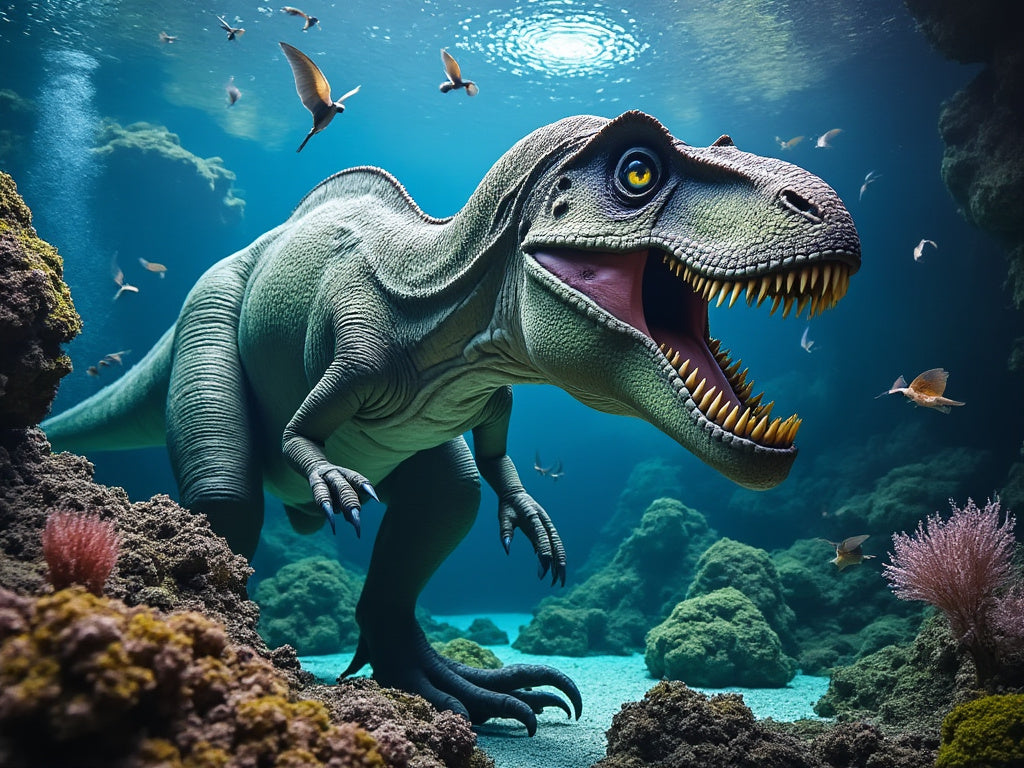
Managing Dinoflagellates in Reef Tanks: How Reef Solutions Products Can Help
Share
Dinoflagellates, commonly known as “dinos,” can be a major nuisance in reef tanks, especially when nutrient levels aren’t well balanced. Many reef keepers struggle with these single-celled algae due to their rapid growth in low-nutrient environments. At Reef Solutions, we frequently get questions from our customers about how to control dinoflagellates and what products might help reduce their presence. In this post, we’ll answer one such customer question about dealing with “LCA dinos” and share some advice on managing nutrient levels to keep your reef tank healthy.
Customer Question:
Hi, I've been having issues with LCA dinos and was wondering if you had any pods that would potentially eat them or help with it? Thanks!
Answer:
Customer Question:
Hi, I've been having issues with LCA dinos and was wondering if you had any pods that would potentially eat them or help with it? Thanks!
Answer:
Thanks for reaching out! While there's no specific type of pod that is guaranteed to eat LCA dinoflagellates directly, adding Live Triggers could still help manage the issue. Copepods, along with other microfauna, help consume organic waste and compete with dinoflagellates for resources, which may reduce their impact over time and help balance out the tank.
|
Live Tigriopus californicus (Live Triggers) Brand: Reef SolutionsType: Live Copepods (Tigriopus californicus)Ideal For: Marine Aquariums, Refugiums, Finicky Fish Description: Bring the best of the ocean’s ecosystem into your aquarium with Live Triggers from Reef Solutions. These large, hardy red copepods, also known as
www.reefsolutions.ca
|
If I may suggest pairing copepods with a few other products and strategies that may help stabilize the tank:
-
Live Phytoplankton – This adds diversity and helps create a natural balance in your tank. It feeds both copepods and other beneficial organisms.Live Phytoplankton (Nannochloropsis & Tetraselmis) Brand: Reef SolutionsType: Live PhytoplanktonSpecies: Nannochloropsis & Tetraselmis Description: Boost the health and vitality of your marine ecosystem with Live Phyto from Reef Solutions. Our premium blend contains two of the most nutrient-dense and versatilewww.reefsolutions.ca
-
Bacteria Boost+ – This product doesn’t add bacteria directly but provides a key element that bacteria need to reproduce and thrive. When given the right nutrients, bacteria can double in number every 20 minutes to a few hours, far outpacing the growth rate of dinoflagellates, which typically divide only once a day. By supporting rapid bacterial growth, Bacteria Boost+ can help beneficial bacteria outcompete dinos for resources in your tank. However, if you decide to go this route, please ensure you also pick up the 3rd point as you don't want to bottom out your levels.Bacteria Boost+ Brand: Reef SolutionsType: Biological EnhancerIdeal For: Marine Aquariums Description: Struggling with high nutrient levels in your reef tank? Bacteria Boost+ from Reef Solutions is your go-to solution for achieving a balanced and harmonious aquatic environment. This effective formula provides a reliablwww.reefsolutions.ca
-
Nitrate and Phosphate Balance – Keeping nutrients detectable but balanced (not too high or zeroed out) is key. Our Nitrate Boost+ and Phosphate Boost+ can help ensure you’re not bottoming out on nutrients, as dinos often thrive in ultra-low-nutrient systems.
Phosphate Boost+ Brand: Reef SolutionsType: Phosphate SupplementIdeal For: Reef Tanks, Planted Aquariums, and Low-Nutrient Systems Description: Achieve optimal phosphate levels in your aquarium with Reef Solutions Phosphate Boost+, the cost-effective alternative to Brightwell’s NeoPhos! This product is a game-changer fwww.reefsolutions.caNitrate Boost+ Brand: Reef SolutionsType: Nitrate SupplementIdeal For: Marine and Freshwater Aquariums, Low-Nutrient Systems, Macroalgae Growth Description: Upgrade your aquarium's nitrogen levels effortlessly with Nitrate Boost+, the cost-effective alternative to Brightwell’s NeoNitro. Formulated to match NeoNitro’s cwww.reefsolutions.ca
Side note: all living cells need both nitrogen and phosphorus, as these elements are essential building blocks for life:Nitrogen – Vital for amino acids, proteins, and nucleic acids (DNA and RNA). Without nitrogen, cells can't build the proteins and enzymes required for cellular processes or the genetic material for reproduction.Phosphorus – Critical for energy transfer and genetic material. Phosphorus is a key component of ATP (adenosine triphosphate), the molecule cells use for energy. It’s also part of DNA and RNA, forming the backbone that links genetic codes.Both nitrogen and phosphorus are needed for cell growth, reproduction, and metabolism across all living organisms, from bacteria and algae to plants and animals. In aquariums, maintaining a balance of these nutrients is essential to support the growth of beneficial organisms and prevent the dominance of nuisance species like dinoflagellates.Hope that helps! I'll look for your order!





